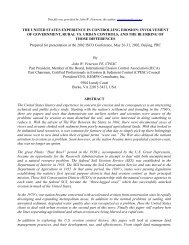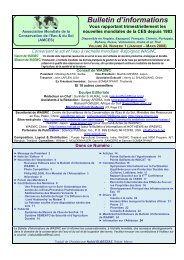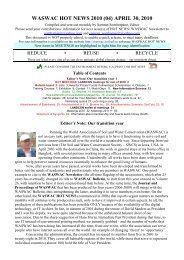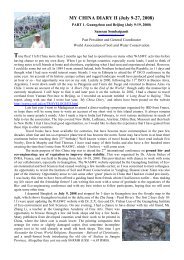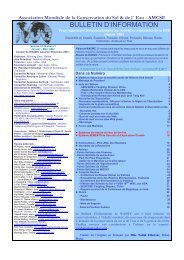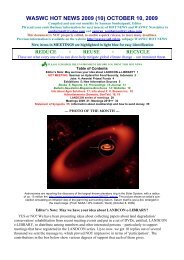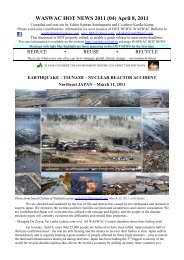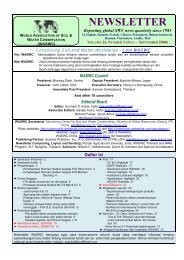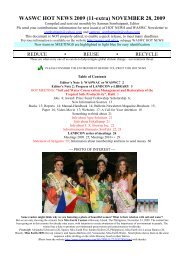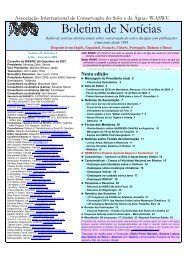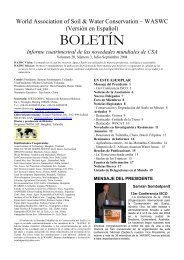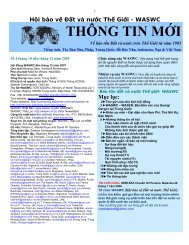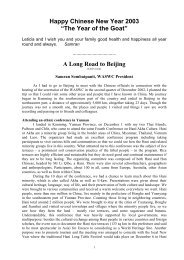Soils of the European Union - European Soil Portal - Europa
Soils of the European Union - European Soil Portal - Europa
Soils of the European Union - European Soil Portal - Europa
You also want an ePaper? Increase the reach of your titles
YUMPU automatically turns print PDFs into web optimized ePapers that Google loves.
4. Spatial distribution <strong>of</strong> <strong>the</strong> major soils in <strong>the</strong> <strong>European</strong> <strong>Union</strong>4.1 AcrisolsGeographical distributionAcrisols cover about 10,000 km 2 , 0.26% <strong>of</strong> <strong>the</strong> surface area <strong>of</strong> <strong>the</strong> EU. Most <strong>of</strong> <strong>the</strong> <strong>European</strong> Acrisols are located asassociated soils on <strong>the</strong> Iberian Peninsula and in Greece, but also can be found in Sou<strong>the</strong>rn England, Denmark and in limitedareas in Romania and Bulgaria. They form <strong>the</strong> dominant soil in six associations and occur as associated soils in 70associations and as inclusions in 372 cases.Five soil units <strong>of</strong> <strong>the</strong> Acrisols Reference <strong>Soil</strong> Group can be found in <strong>the</strong> EU with Gleyic Acrisols and Haplic Acrisolsoccupying more than 90% <strong>of</strong> <strong>the</strong>ir area (Table 4.1, Figure 4.1).Table 4.1 Area <strong>of</strong> <strong>the</strong> second level units <strong>of</strong> AcrisolsUnits in <strong>the</strong> Reference <strong>Soil</strong> Groupin <strong>the</strong> EUCodes <strong>of</strong>soil unitsArea in <strong>the</strong> EUkm 2Ferric Acrisol ACfr 178Gleyic Acrisol ACgl 3359Haplic Acrisol ACha 6277Humic Acrisol AChu 803Plinthic Acrisol ACpl 10Ferric Acrisols with <strong>the</strong>ir ra<strong>the</strong>r small era coverage can be found in Sou<strong>the</strong>rn Portugal. Gleyic Acrisols occupyconsiderably larger areas and situated mainly on <strong>the</strong> south-western plains <strong>of</strong> Spain. Haplic Acrisols can be found in nearlyall Acrisol areas <strong>of</strong> <strong>the</strong> EU, mostly as inclusions among o<strong>the</strong>r soils. Humic Acrisols are widespread in Denmark asassociated soils. Plinthic Acrisols have very small spatial extend which is limited to some inclusions in soil associations inPortugal.0.09%7.56% 1.67%31.61% ACfrACglAChaAChuACpl59.07%Figure 4.1 Share <strong>of</strong> <strong>the</strong> second level soil units in <strong>the</strong> area <strong>of</strong> AcrisolsGlobal referenceAcrisols are highly wea<strong>the</strong>red soils occurring in warm temperate regions and <strong>the</strong> wetter parts <strong>of</strong> <strong>the</strong> tropics and subtropics.Acrisols develop mostly on old land surfaces with hilly or undulating topography with a natural vegetation type <strong>of</strong> a lightforest. Being quite sensitive to erosion, Acrisols are <strong>of</strong>ten <strong>the</strong> dominant soil group on old erosional or depositional surfaces.There are approximately 10 million km 2 <strong>of</strong> Acrisols world-wide.Acrisols can be characterized by accumulation <strong>of</strong> low activity clays in an argic subsurface horizon and by a low basesaturation level. The chemical properties <strong>of</strong> Acrisols are quite poor, containing low level <strong>of</strong> nutrients and high levels <strong>of</strong>aluminum. These conditions mean ra<strong>the</strong>r limited soil use options.Acrisols correlate to several subgroups <strong>of</strong> Alfisols and Ultisols <strong>of</strong> <strong>the</strong> <strong>Soil</strong> Taxonomy <strong>of</strong> <strong>the</strong> USDA, Desaturated Ferralitic<strong><strong>Soil</strong>s</strong> <strong>of</strong> France and are similar to Red-Yellow Podzolic soil in Indonesia.12




